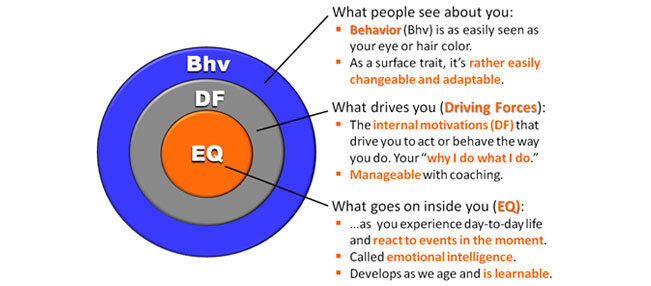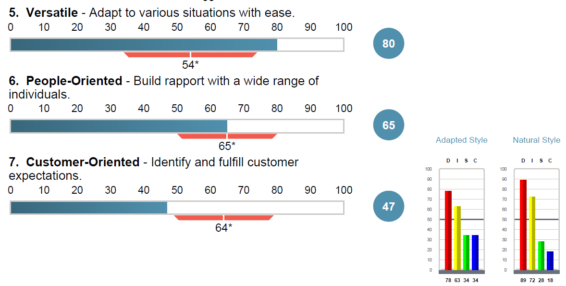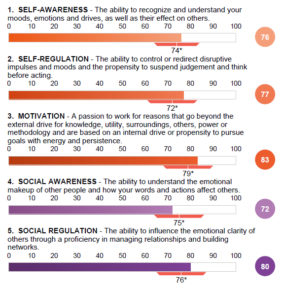You Can Raise Your EQ in 2022, Part 2
Posted in Dynamic Training News, Improve Sales & Profits, Latest Leadership Posts, Leadership Development & Training, Performance Management, Talent Development & Training, Team Building & Alignment on Jan 04,2022
In Part 1 of Emotional Intelligence: Your Career Superpower we explored the basics of emotional intelligence, why EQ is a critical career super power, and its necessity in almost every role in an organization. In Part 2 we’ll take a look at what individuals and organizations can do to raise their levels of emotional intelligence, plus some tools that will aid this process. In the concluding Part 3 we’ll look at some of the practical applications of the tools and the ways leading organizations are using them to raise and sustain excellent performance.
Emotional Intelligence Can be Raised
Unlike IQ, EQ can be learned. While some people tend towards greater natural empathy and sensitivity to their own – and others’ – feelings, this capability can be developed and mastered. The simple process of maturing as an adult and in one’s career teaches most people how to recognize their own emotional state and that of others. As Travis Bradberry states in his Forbes article, What Happens to Your EQ As You Age, “improvement is common. Life {teaches people} to gradually increase in emotional intelligence.” His research indicates that someone’s emotional intelligence typically peaks during their fifties and sixties.
In speaking with emotional intelligence experts at TTI Success Insights I learned that not only does EQ rise over time, but it is impacted by an individual’s progressive level of responsibility. EQ increases as one moves higher from individual contributor to first level supervisor to manager, and then begins to decline as the individual rises to director, V-, and C-levels. The TTI experts I spoke to explained this phenomenon: strong people skills such as EQ allow people to progress toward greater levels of responsibility, but at a certain point in that progression, job demands increase, resulting in less people time where EQ can be applied. Faced with a high workload, many leaders multitask and don’t allow the time for strong interpersonal relationship building. The most effective senior leaders buck this trend. They don’t allow the busyness of their jobs to diminish their opportunities to apply EQ best practices.
The Relationship Between Behavior, Driving Forces, and EQ
While human beings are inherently quite complex, the following simplified three-layer model is useful when it comes to understanding the relationship between human behavior (what they do), driving forces (why they act) and emotional intelligence (what is happening inside people):
One’s behavior (Bhv) – an easily observable surface trait – is caused by the driving forces (DF) that underlie the observed behavior. At the core of this model is emotional intelligence (EQ), an internal measuring, monitoring and guidance system inside a person and which governs his or her motivations.

Assessments for Measuring EQ, Driving Forces, and Behaviors
There are a number of high quality tools available to individuals and organizations. Like any tool, you get what you pay for. So consider carefully your options before investing your time and money. It is wise to seek the expertise of trained and certified individuals who can help you administer and apply these tools.
Assessments are a great place to start as they measure an individual’s current state, which forms a starting point for developing a plan forward. {Important disclosure: with more than thirty years’ experience administering and interpreting assessments, I’ve had a chance to evaluate hundreds of assessments and I’m certified/authorized in the administration of dozens of best-in-class assessments}. It is important to use assessments that have been well-vetted and have undergone evaluation for validity, reliability, and correlation, and are deemed free from bias.
Guiding Principle. The most effective people are those who first understand themselves, then they understand other people and situations, and consequently adapt their approach in order to be successful with other people and in specific situations. Assessments can help you to better understand yourself and others.
Behavioral Assessments. The two leading systems for measuring behavior include Myers-Briggs (MBTI) and DISC. I lean toward DISC because of its understandability and ease of application in the workplace. There are multiple versions of DISC available through authorized distributors such as TTI Success Insights, Wiley, and Indaba Global. Assessments are usually completed online in 15 minutes or less. Shown below is a small portion of a report page for a TTI Behaviors report:

Driving Forces/Motivation. This type of assessment is completed online and measures human motivation and drive. Among the top providers are TTI’s 12 Driving Forces and the Wonderlic Motivation Potential Assessment (image shown below).

Emotional Intelligence Assessments. Most emotional intelligence assessments are completed online. Top providers include TTI EQ3, TalentSmart, ESCI (Emotional Intelligence Competency Index), and the Hogan EQ. To the right is an image of the EQ graphs from the TTI EQ3 Assessment.
Observations. While each of the assessment types are helpful as a stand-alone tool for discovering who someone really is, only one provider, TTI, offers an assessment that integrates all three sciences to form a more complete picture of an individual. It is for this reason my practice primarily uses the TTI assessments, though I’ve used all the providers cited, and they all provide top quality assessments.

Bottom Line
Behavioral science has come a long way in helping us to better understand how individuals can raise their levels of emotional intelligence, as well as the association between emotional intelligence, behaviors and intrinsic motivation. Today some excellent, proven instruments are available to measure these areas and help people better understand themselves and others. Armed with these tools, organizations and individuals can embark on a journey to become more successful in dealing with people and situations.
In Part 3 of Why Emotional Intelligence is a Career Superpower we’ll explore and provide case studies of how leading organizations are using assessments, developmental programs, and coaching to raise and sustain exceptional performance across the board.
This article is excerpted in part from BMG’s best-selling training programs, Unlocking the Power of Our Team, Leading More Effectively With Emotional Intelligence and Selling With Emotional Intelligence.
I love working with people and organizations who want to improve their effectiveness! Here are several outstanding resources that can help you and your organization to go to the next level:
- Improving your (or your team’s) management and leadership skills: Leading Through People™. This acclaimed program equips participants in thousands of current and emerging best practices of leadership, hiring, and talent development.
- Raising your (or your team’s) selling and sales management effectiveness: B2B Sales Essentials™ (among the 30-plus courses we offer are ones on selling with emotional intelligence and storyselling!)
- Conducting a more effective job search: Get a Better Job Faster™
I help leaders and aspiring leaders improve their performance and acumen, and sales and marketing professionals to become more productive and effective. I also work with some of the world’s top employers by helping them get the most out of their talented people. My company’s extensive leadership development course catalog provides effective skills-building for everyone in the organization, from the new / developing leader to the seasoned C-level executive. My company’s coaching programs produce significant results in compressed periods of time. To find out more, please visit us at www.boyermanagement.com, email us at info@boyermanagement.com, or call us at 215-942-0982.
Latest Leadership Posts
Why do You Permit C-Players to Destroy Your Team? Continue Reading
Are You Living ABOVE or BELOW Your Means? Continue Reading
Does Your Self-Improvement Strategy Include This Difference-Maker? Continue Reading



